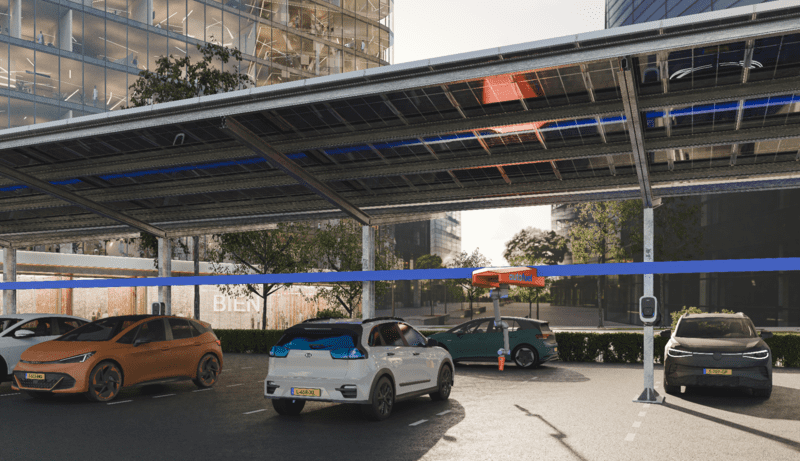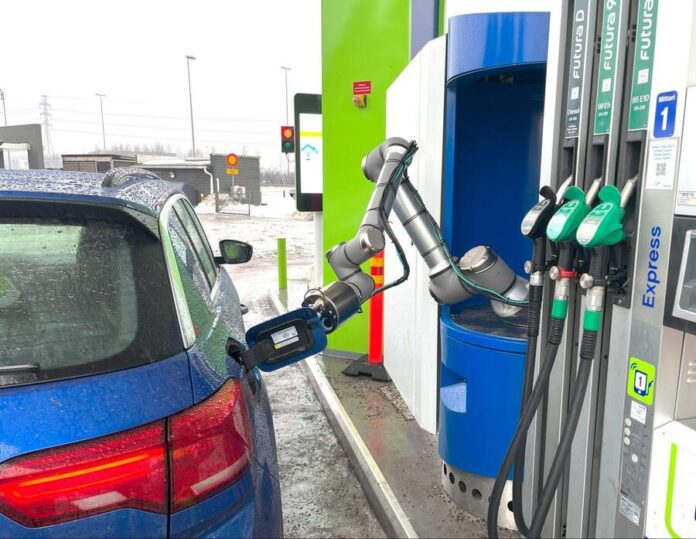On its 10th anniversary, pioneering technology developer Autofuel looks back on its success in a market ripe for disruption and moves toward its future goals to reshape mobility in the modern age.
Founded in 2014 by enterprising entrepreneurs and engineers, the idea for Autofuel’s futuristic refueling solutions began with a simple question: “Why have humans been refueling their cars manually for over 70 years?” The answer to this wasn’t too surprising to Co-founder Jonas Thor Olsen, who is one of the visionaries behind Autofuel. After being prompted to research why the oil and gas market has been so stagnant with technology, he realized that many companies tried to innovate. They had similar ideas about leveraging robotics to automate the process, but all of them failed to create a tech-enabled link between a car and an energy source.
Most companies attempted to create fully integrated refueling systems, which would require gas stations to discard their existing equipment for a newer machine. This approach wasn’t cost-effective and had high legislative barriers preventing widespread adoption. Autofuel recognized these missteps and came along at the perfect time to apply newer technology to a historic problem.
A major factor in Autofuel’s success with automated and robotic refueling systems was its commitment to being an add-on to fueling stations, not a replacement. The emerging startup took its idea for robotic refueling systems to an expo in Stuttgart, Germany, in 2016. They received great feedback when they showcased their prototype, enabling them to refine its features and eventually install the first machine two years later.
The potential for this breakthrough to create long-term success was stifled by the onset of the COVID-19 pandemic, but it created a valuable time for reflection. This limbo period pushed Autofuel’s team to reassess their goals and chart a path to overcome their biggest challenge: developing a system that could live up to the various safety regulations and industry requirements from around the world.
Autofuel’s new and improved Gen3 system was born from this hard work. Compared to previous iterations, the Gen3 model uses a collaborative robotic arm, which is much more lightweight and adaptable than industrial counterparts. It was also the first robotic refueling solution to receive ATEX approval, giving it high functional safety and operational reliability. Autofuel’s machines are powered by proprietary artificial intelligence and sensor technology that can adapt to countless industry applications and fuel types. Customers have seamless experiences with this technology, and gas station owners see higher profits due to faster flow, increased convenience, and a saving on the wages of fuel attendants.
Since prototyping and piloting Gen3, Autofuel is now mass-producing its machines. The company’s robust supply chain can quickly produce, distribute, and install its products in gas stations globally. As Autofuel experimented with several fuel types, it has developed an EV charging offering alongside its flagship refueling solution capable of charging multiple EVs simultaneously. The company has a finalized prototype, which holds the potential to optimize EV charging for drivers and infrastructure operators. However, Autofuel requires a strategic partner to pilot the system and ensure the current prototype is fit for production.

The company is also working to tap into new markets with a standalone ATEX-approved collaborative robot for industries that have a high likelihood of explosions. It’s currently speaking to leaders in oil and gas, food and beverage, and industrial painting about integrating Autofuel machinery into manufacturing environments where industrial robots are expensive, bulky, and dangerous.
Autofuel is on track to achieve its objective of mass-producing convenient automated mobility offerings that accommodate all fuel types. The company is poised to infiltrate global markets, resolving consumers’ and industry leaders’ greatest challenges.
“The future of mobility will be spread across multiple modes of transportation with varying fuel types,” Jonas says. “We are seeing an increase in automation across various industries and a drive towards convenience as the most competitive factor in the retail industry. We are already witnessing the rise of autonomous vehicles, but we are not seeing a rise in the automation and convenience of refueling or recharging them. This should prompt consumers to ask: ‘Why are humans refueling robots?’ Hopefully, these questions inspire gas stations and other industries to reimagine how mobility can catalyze innovation.”
All the photos in the article are provided by the company(s) mentioned in the article and are used with permission.





































